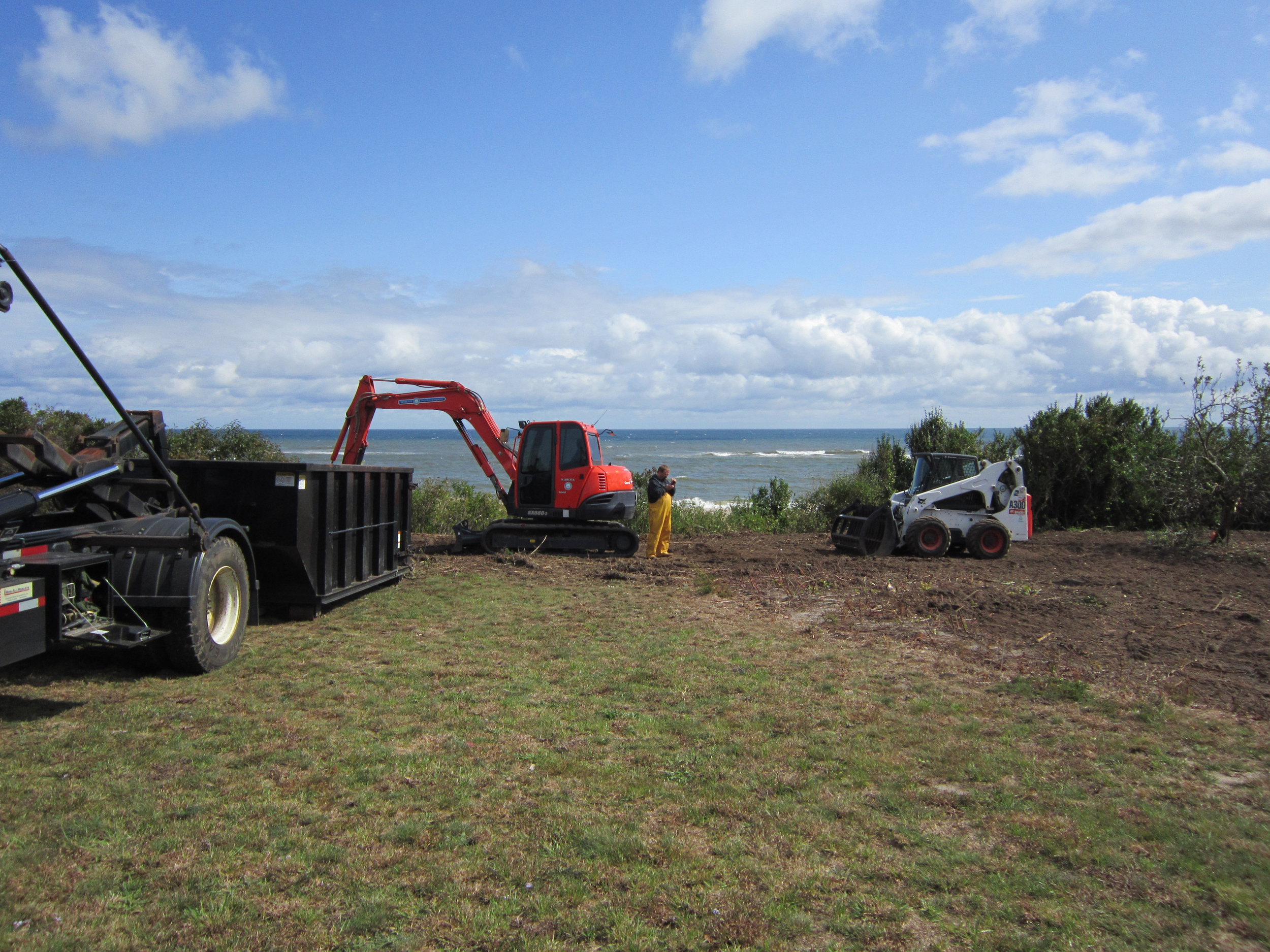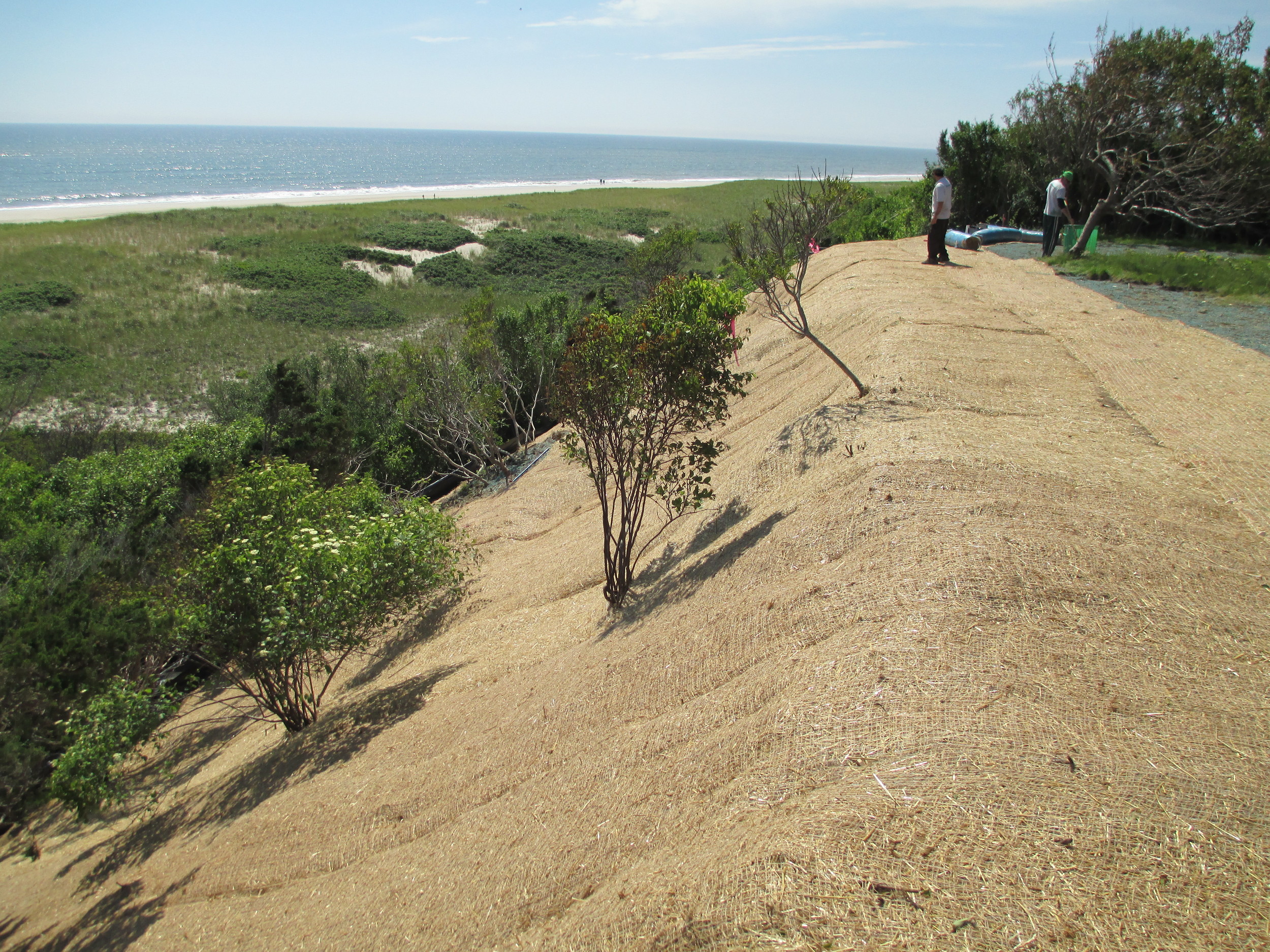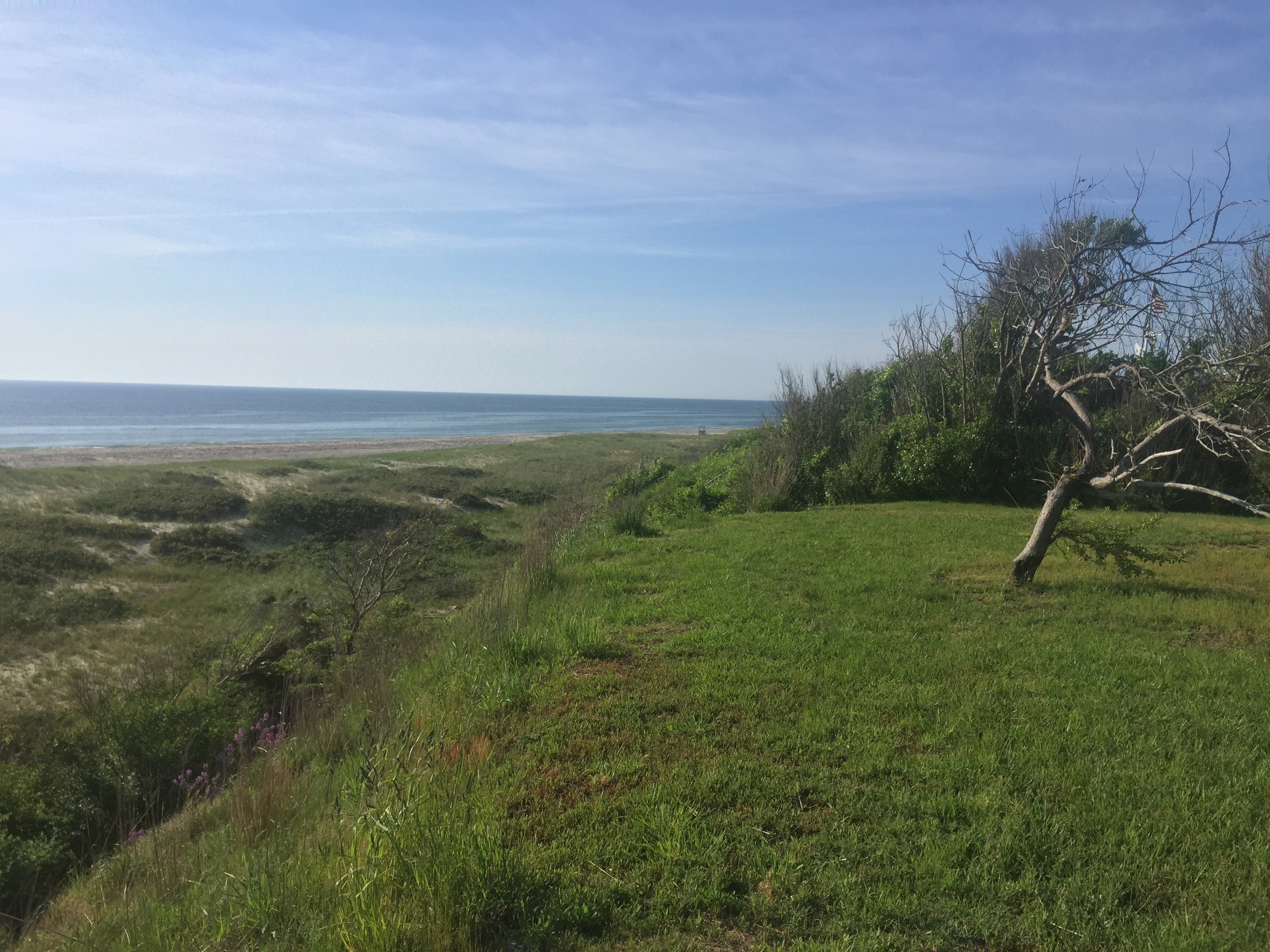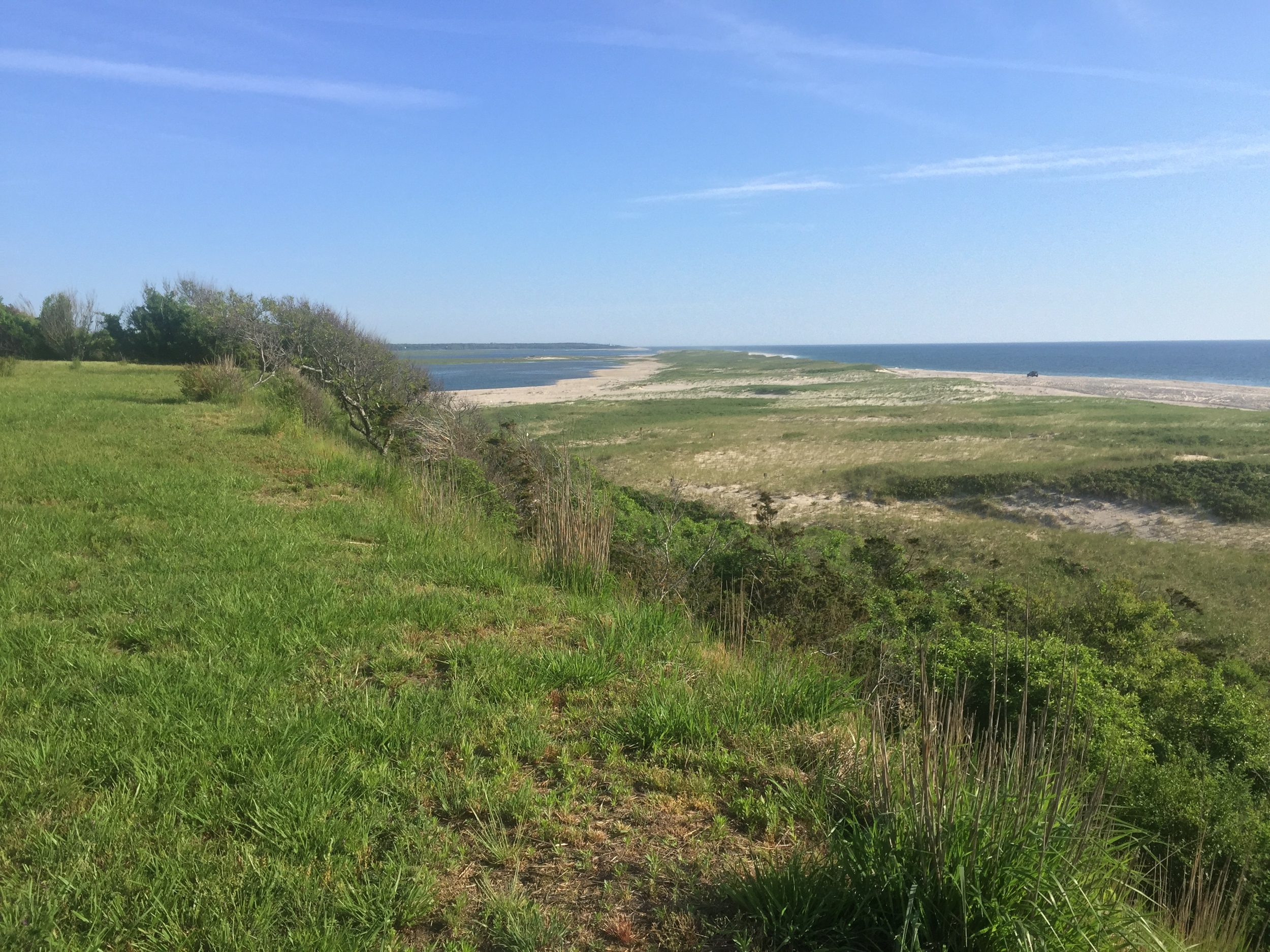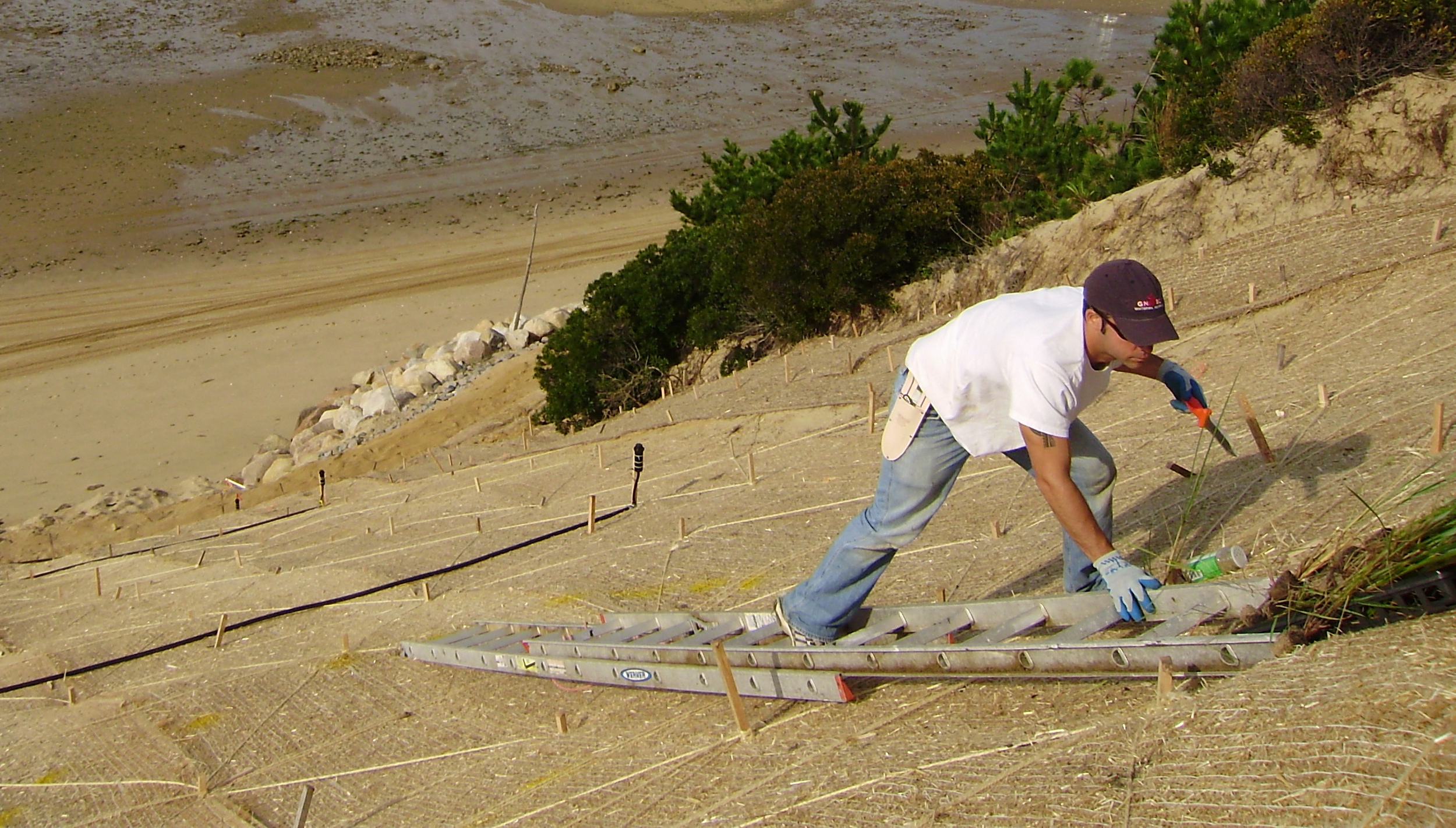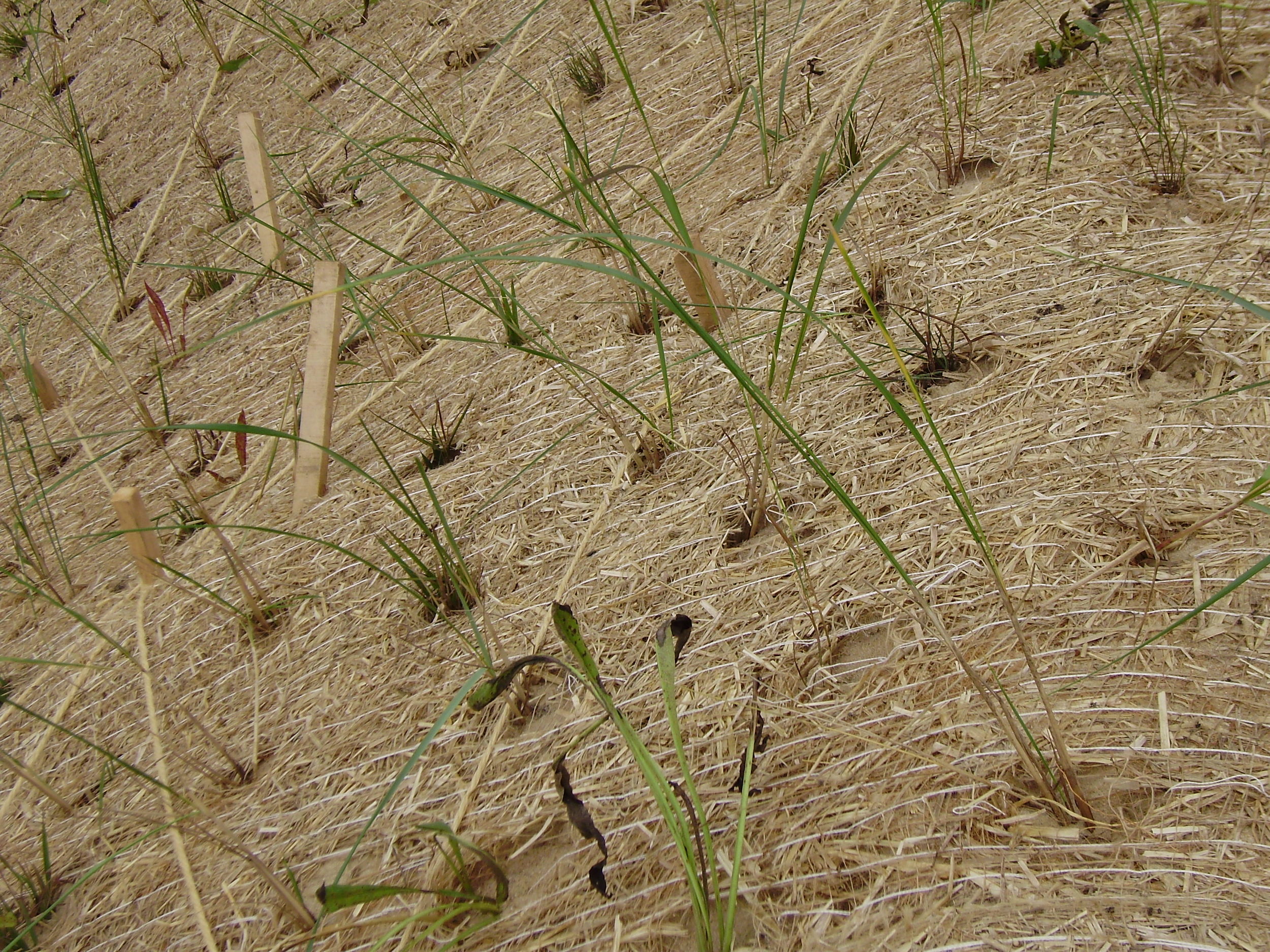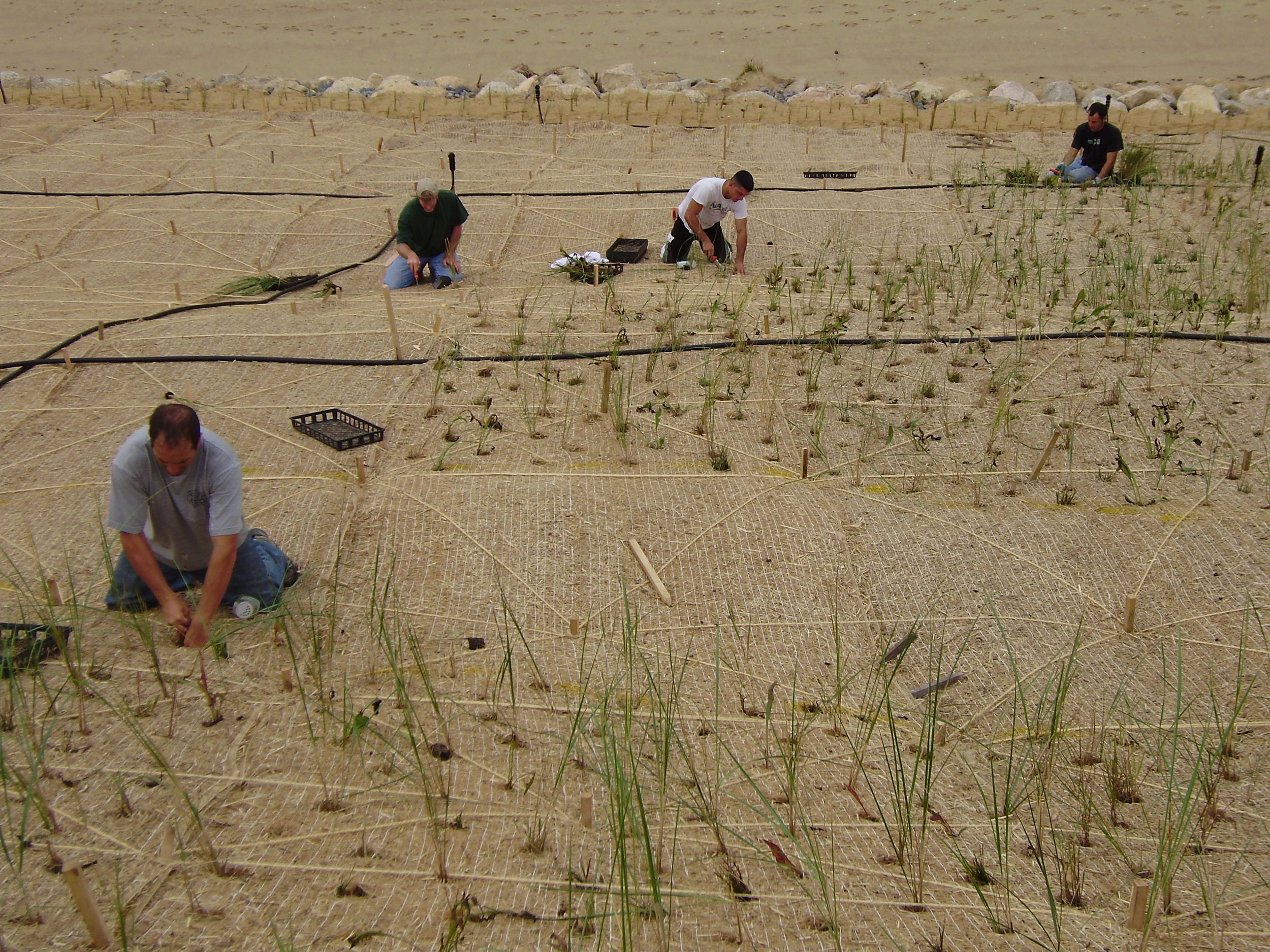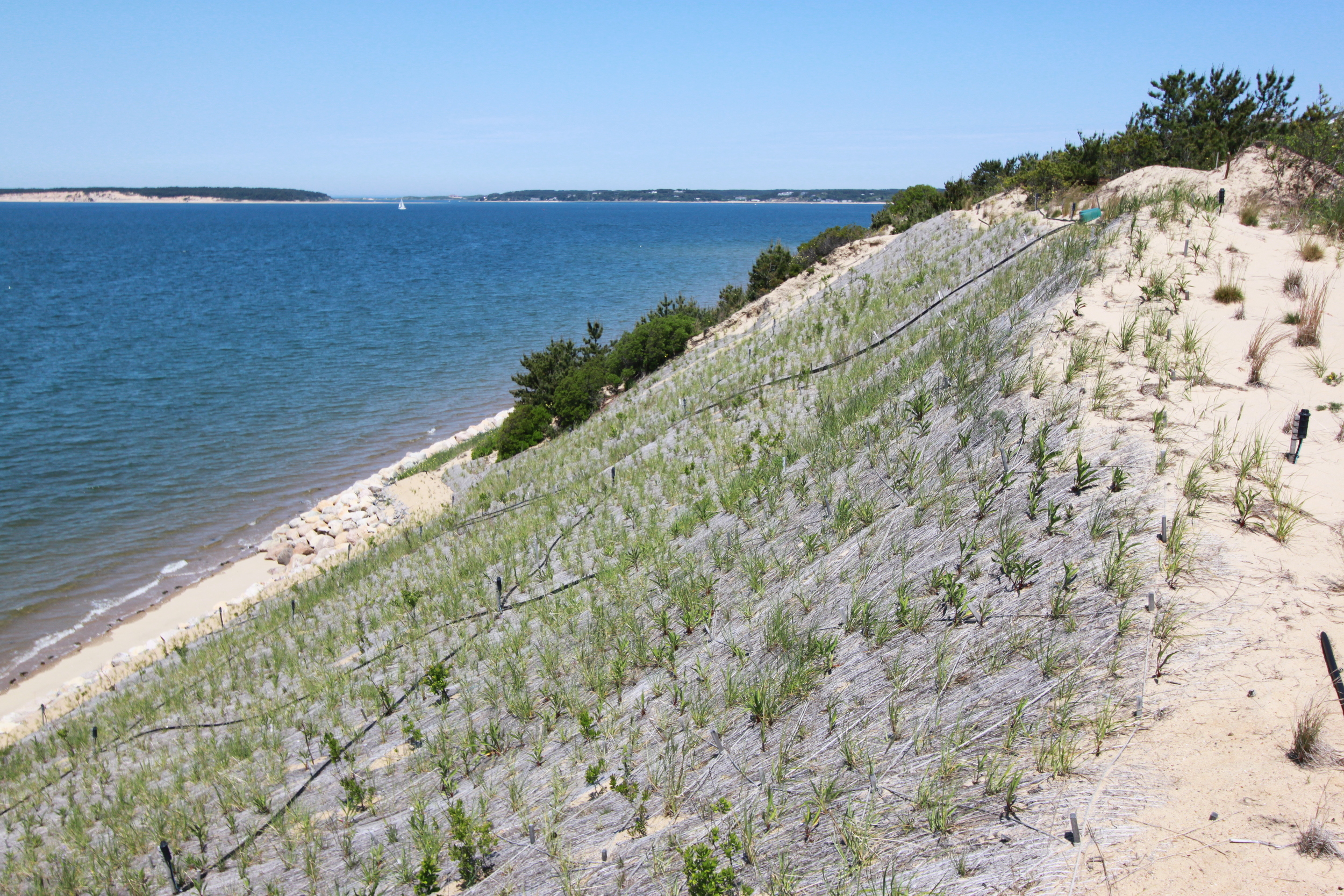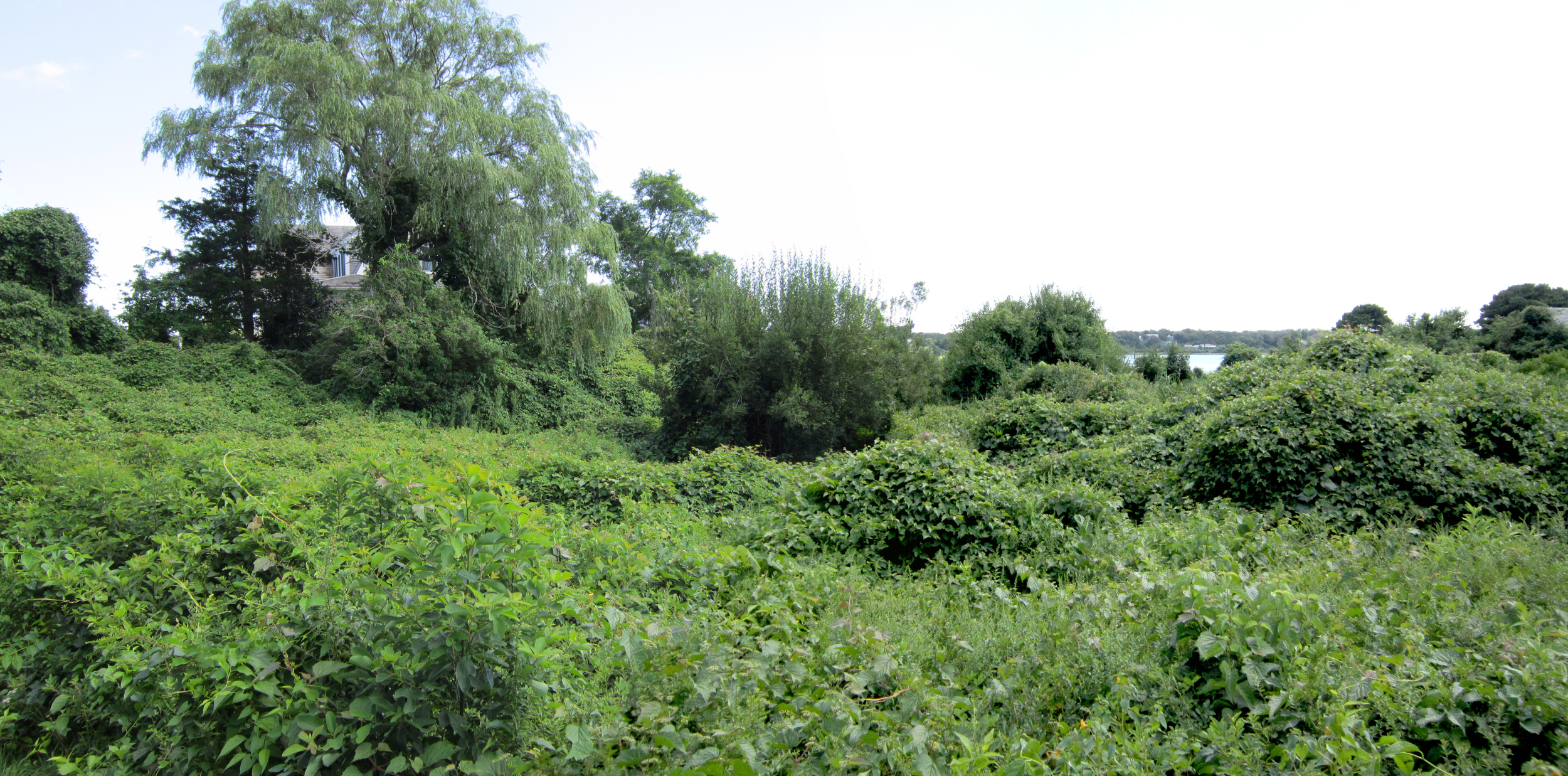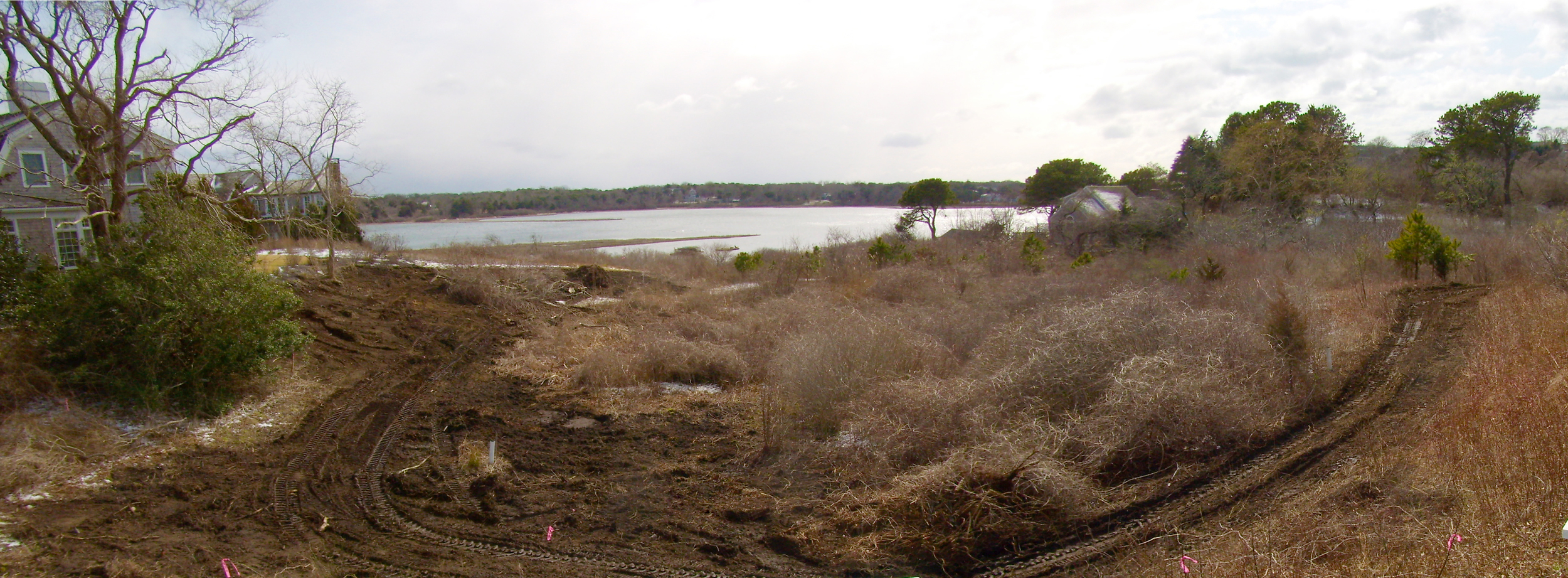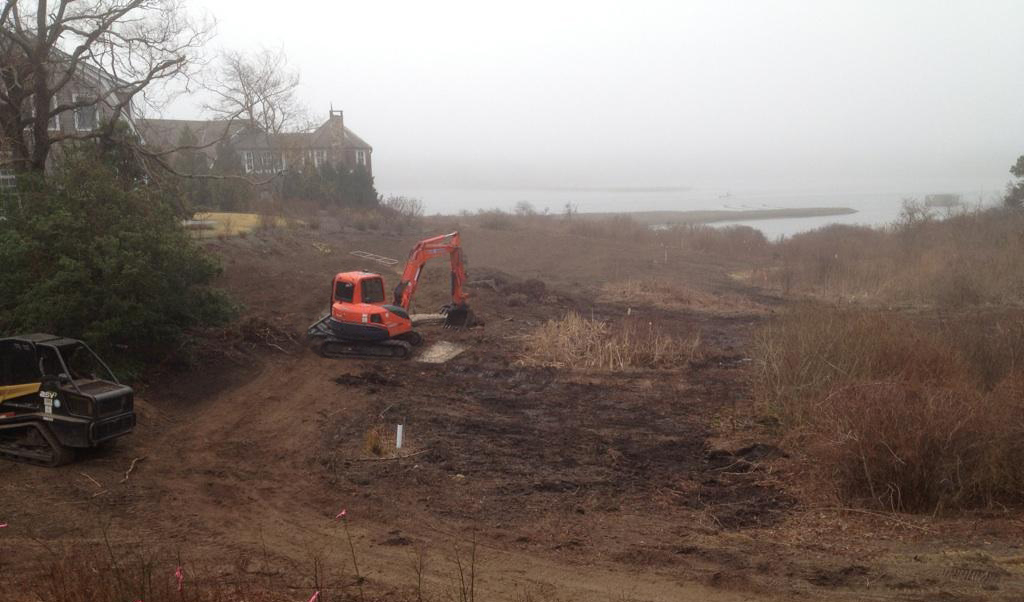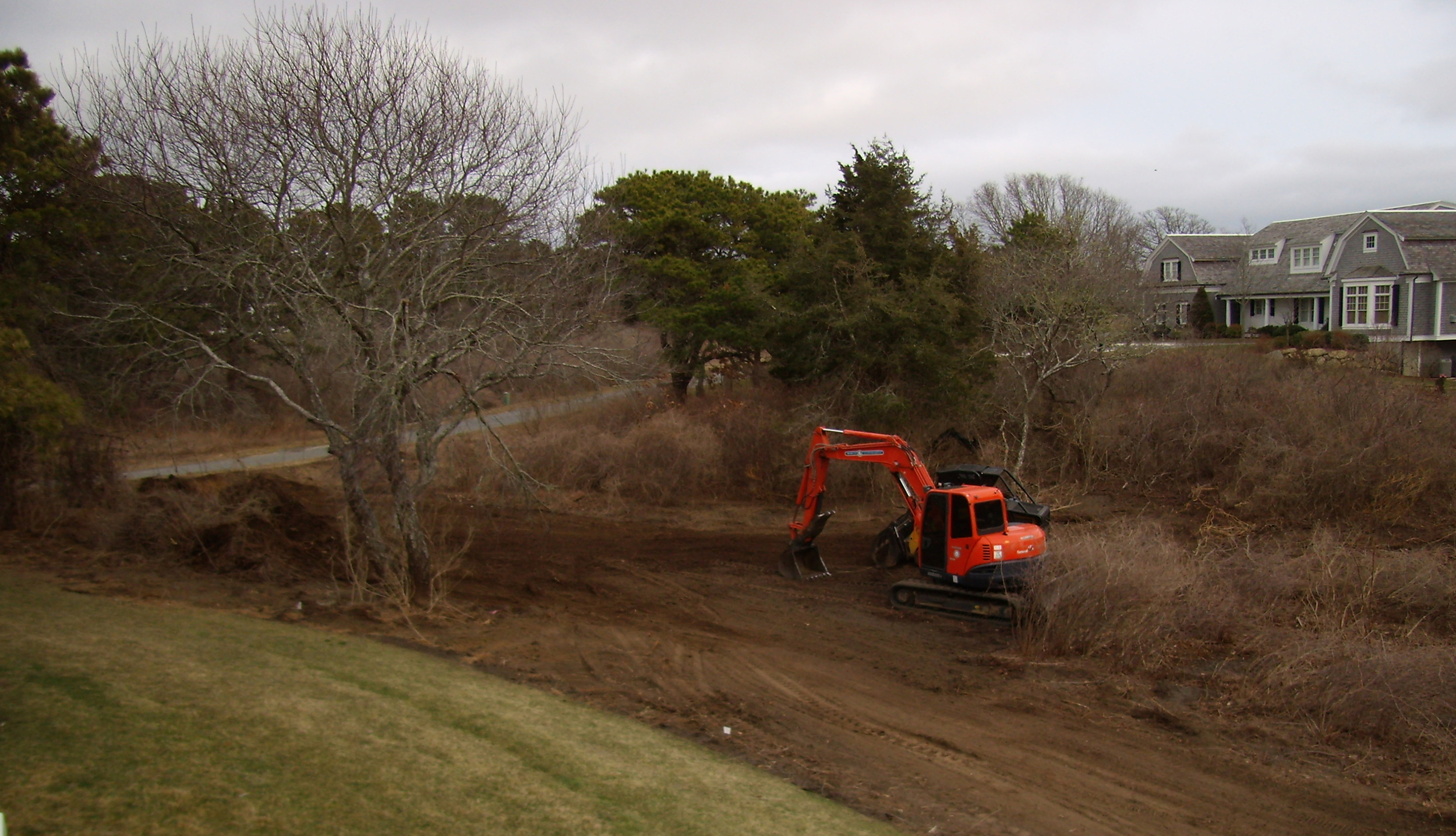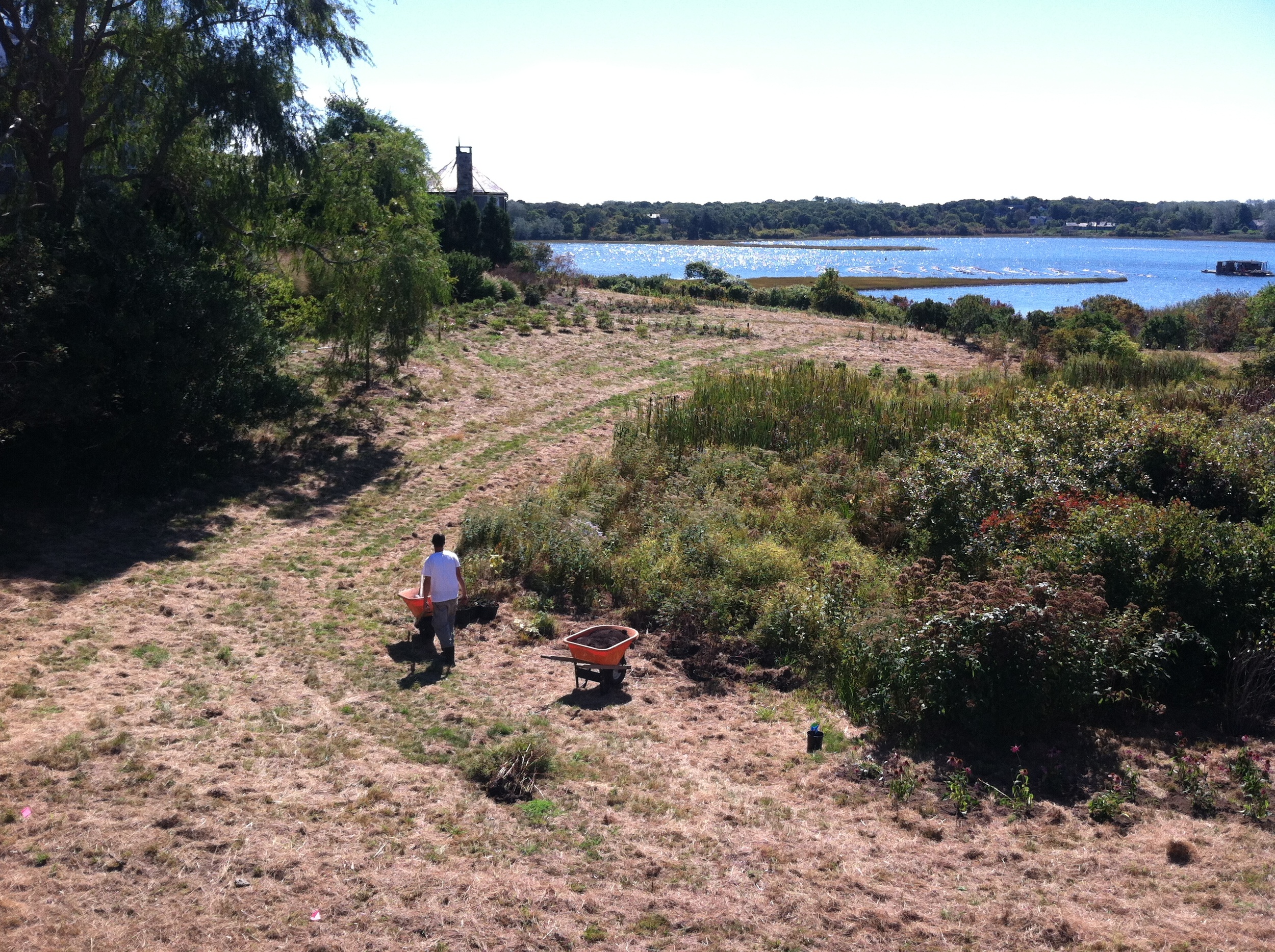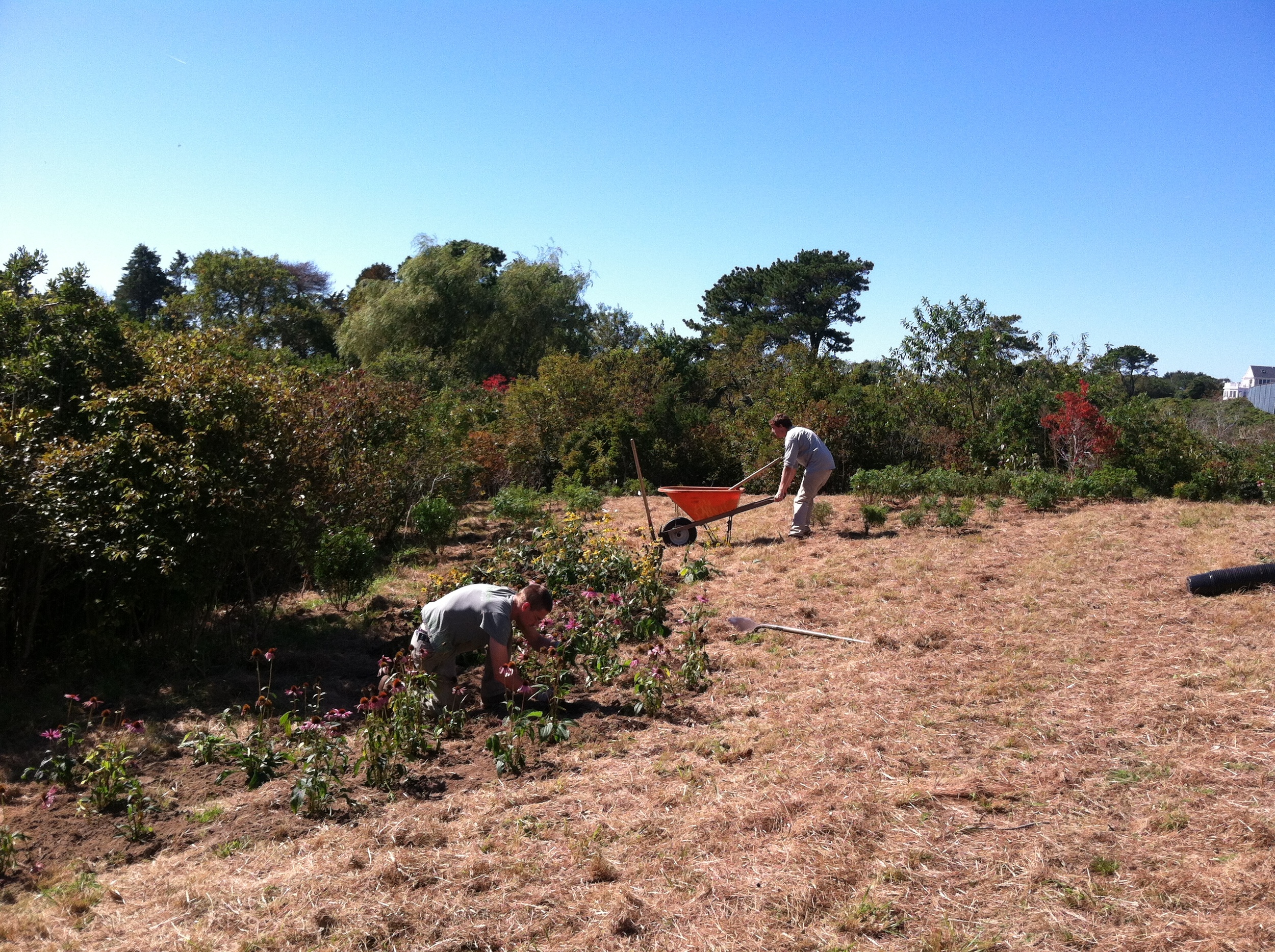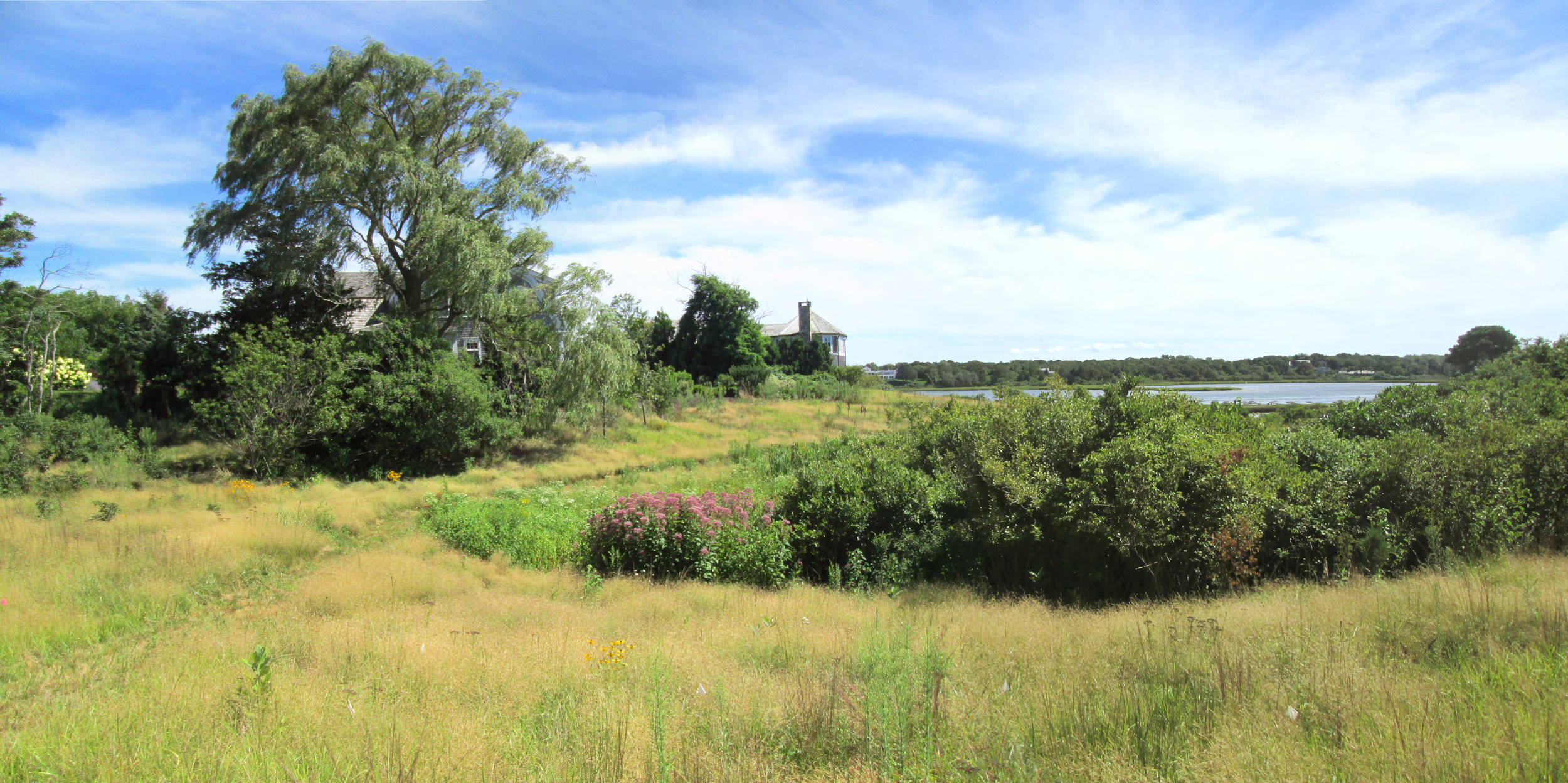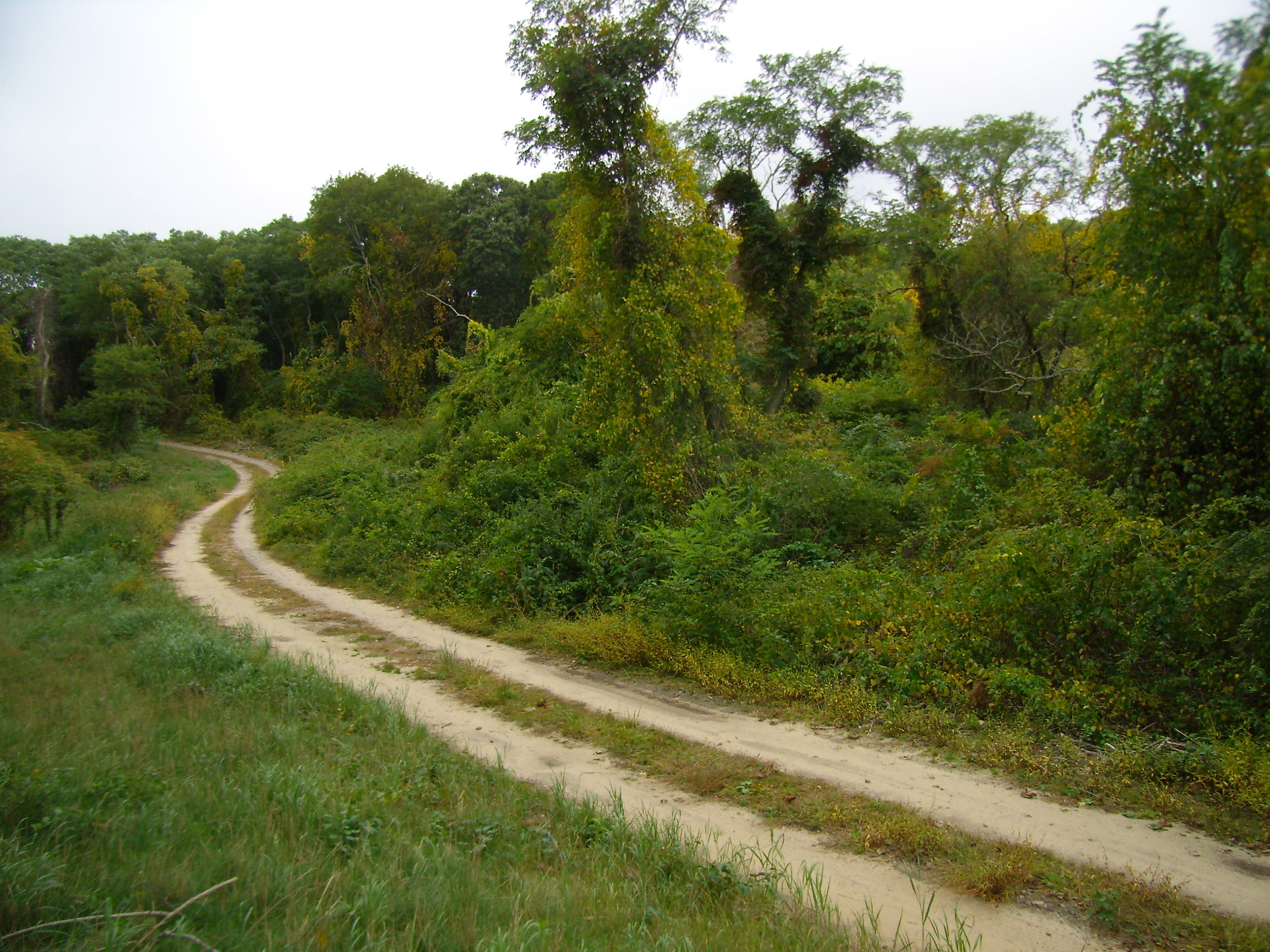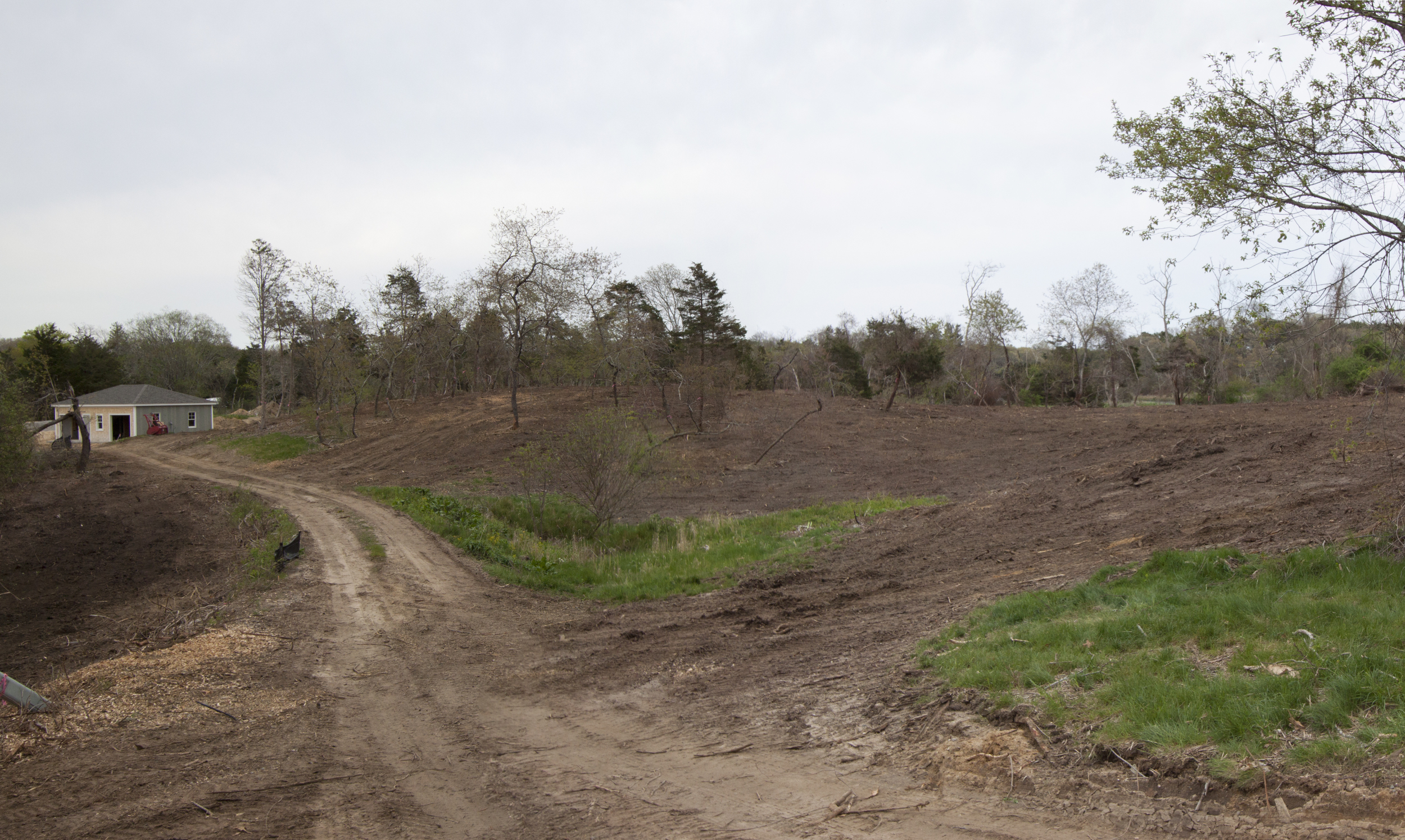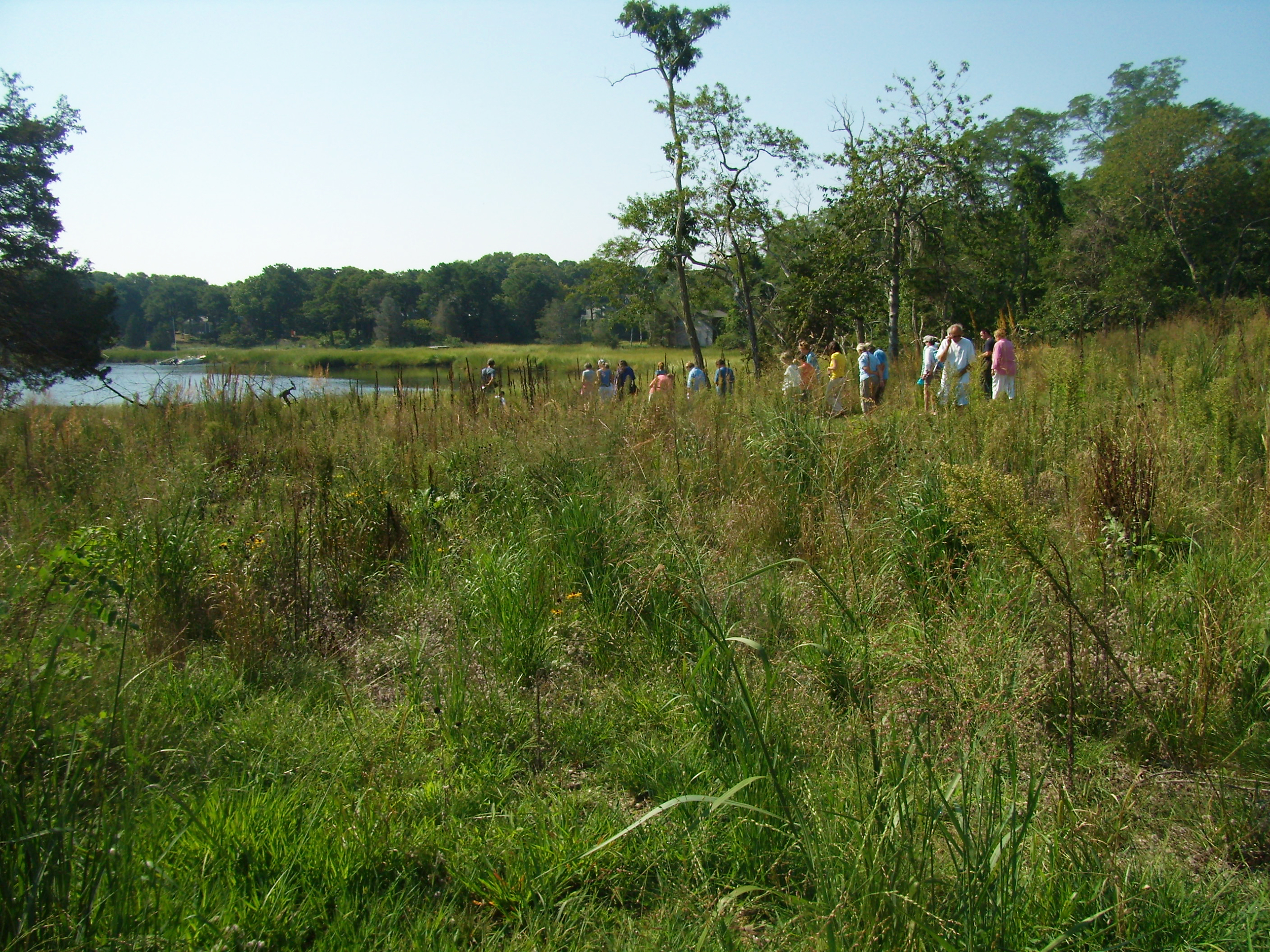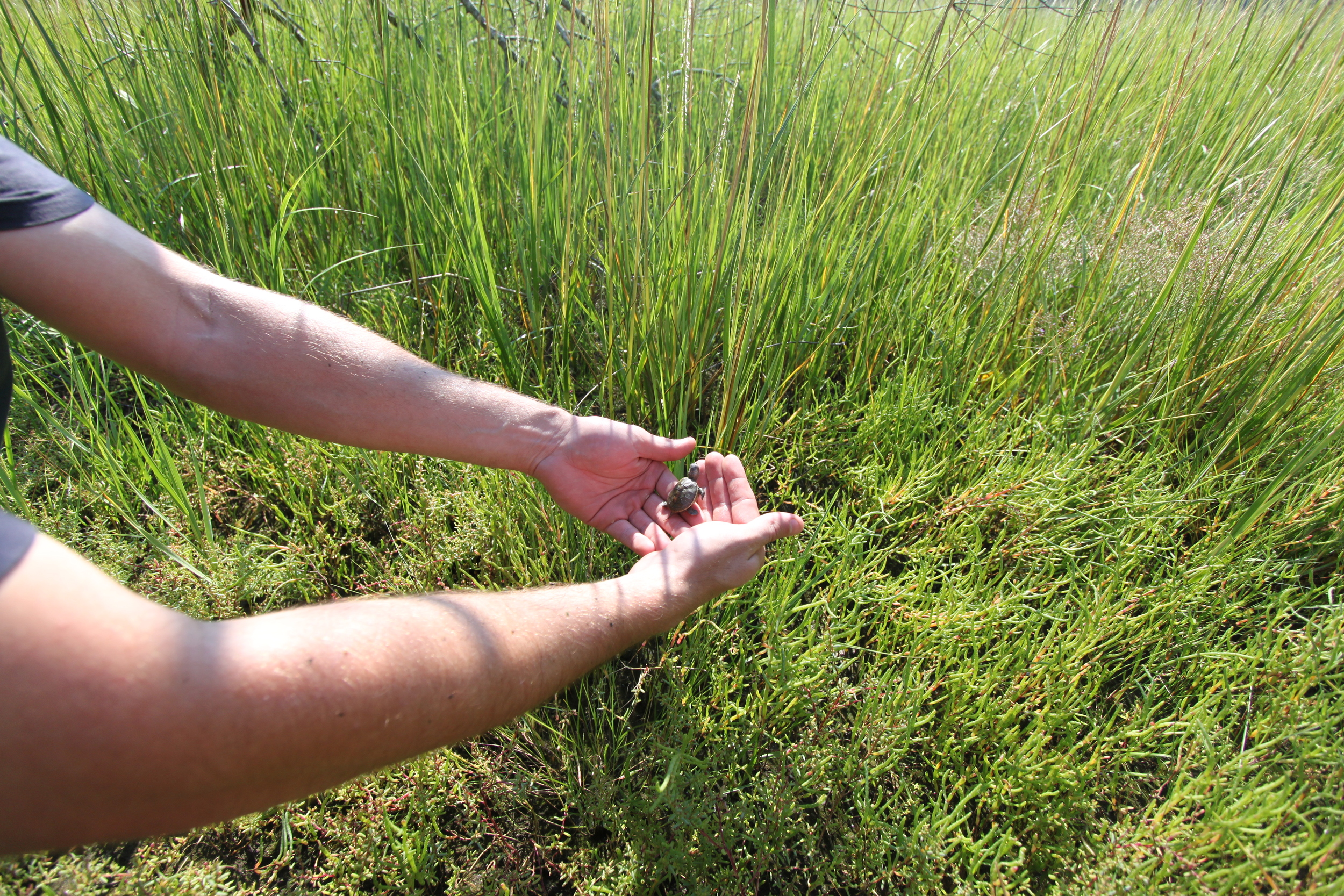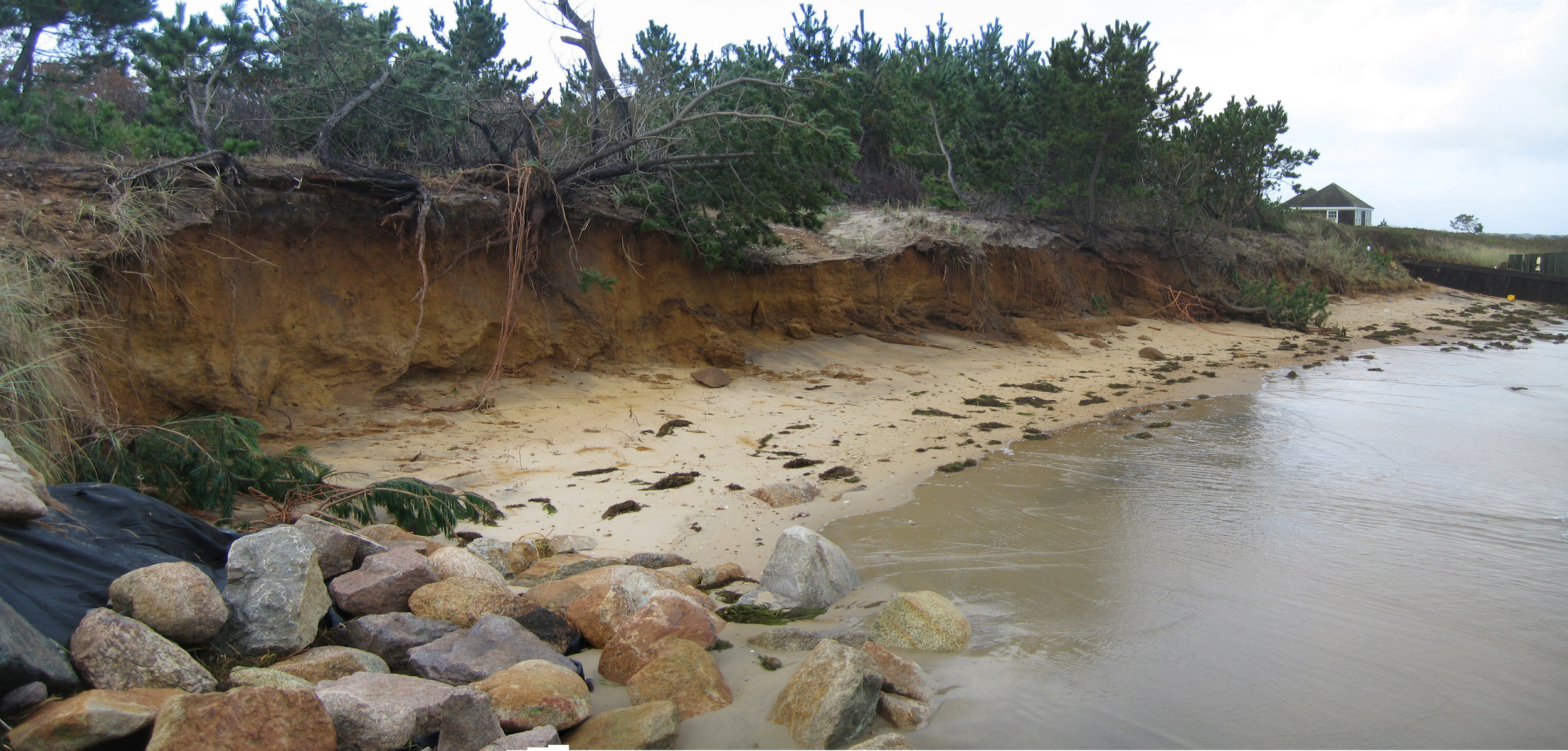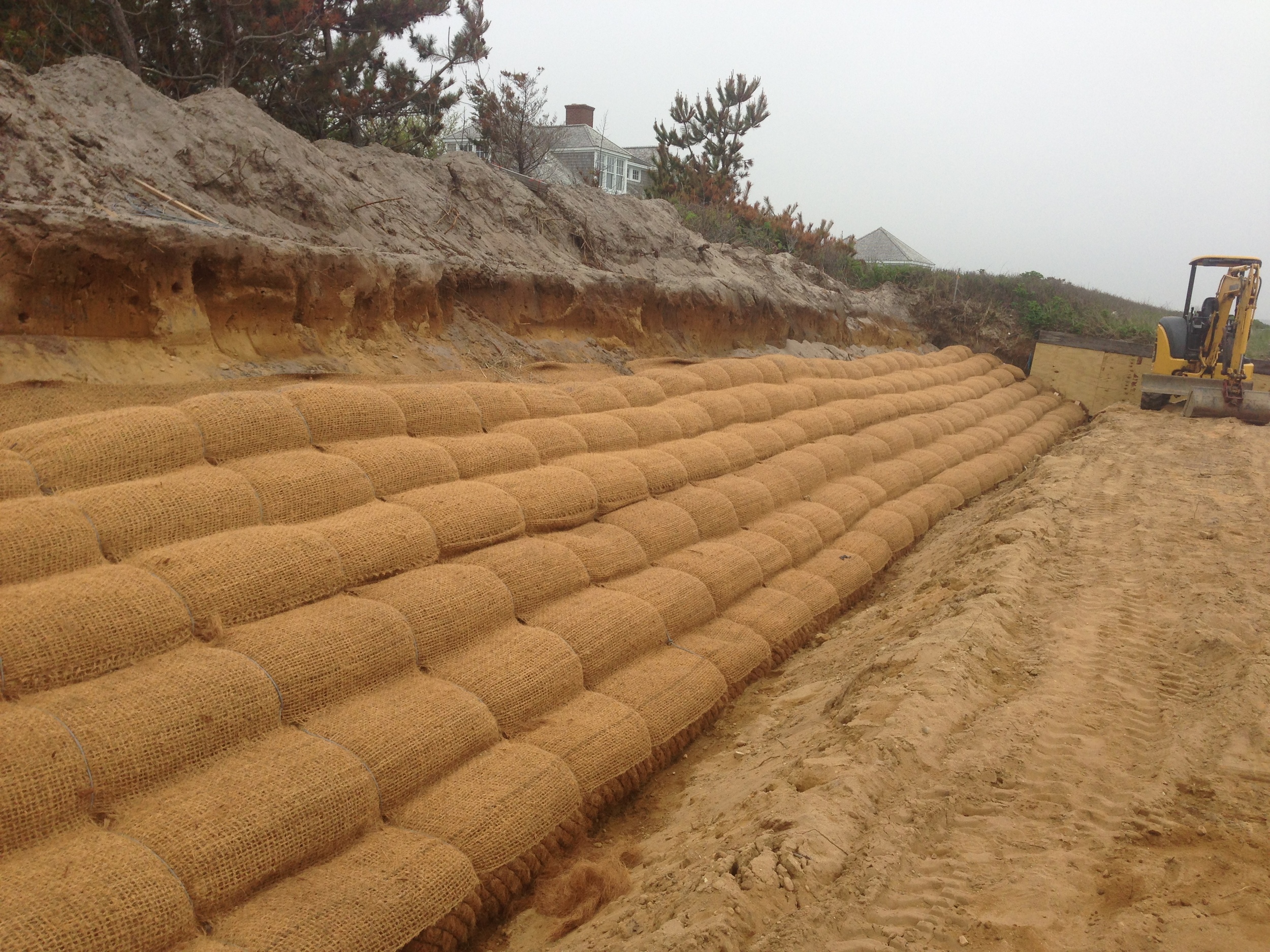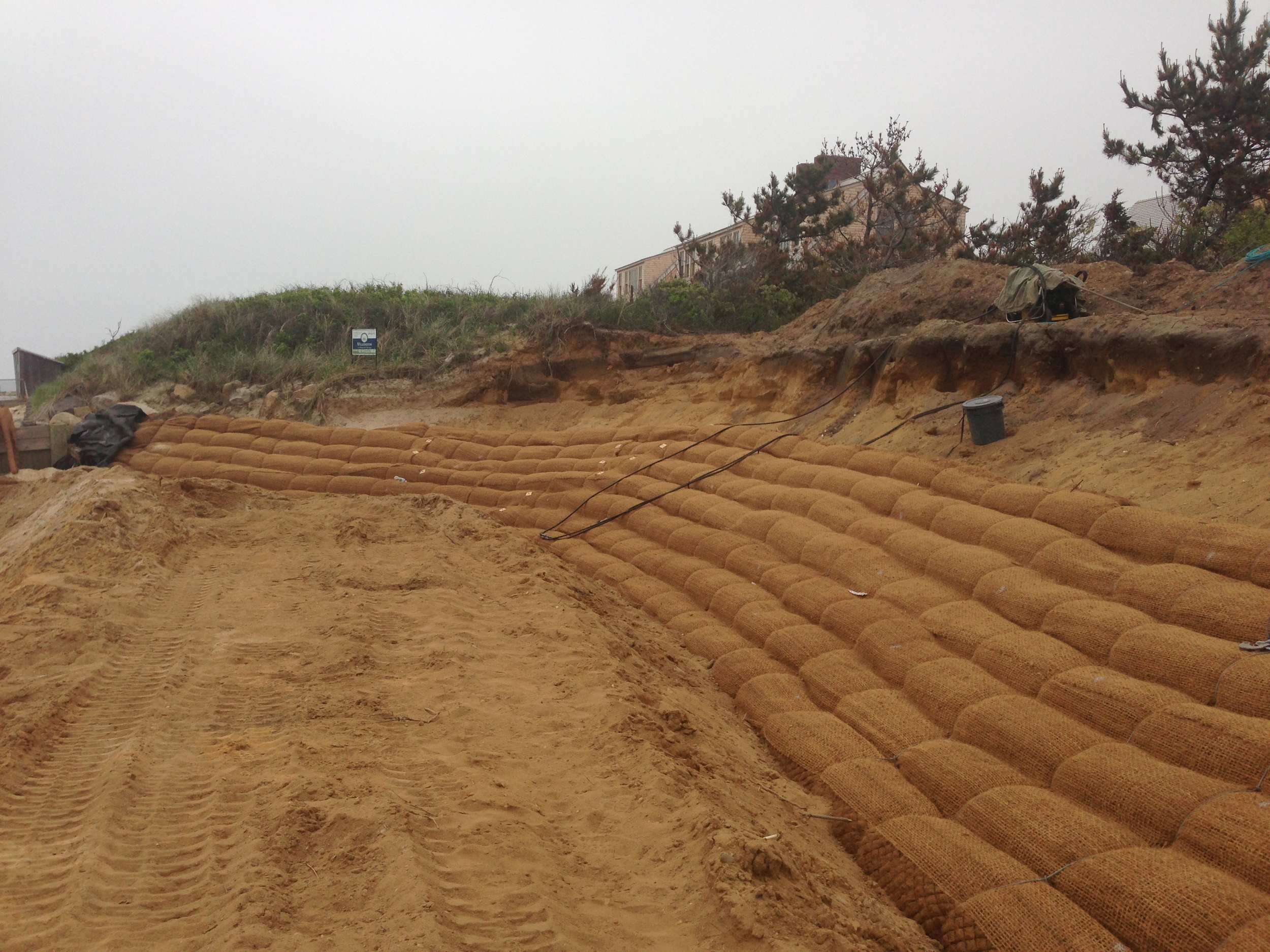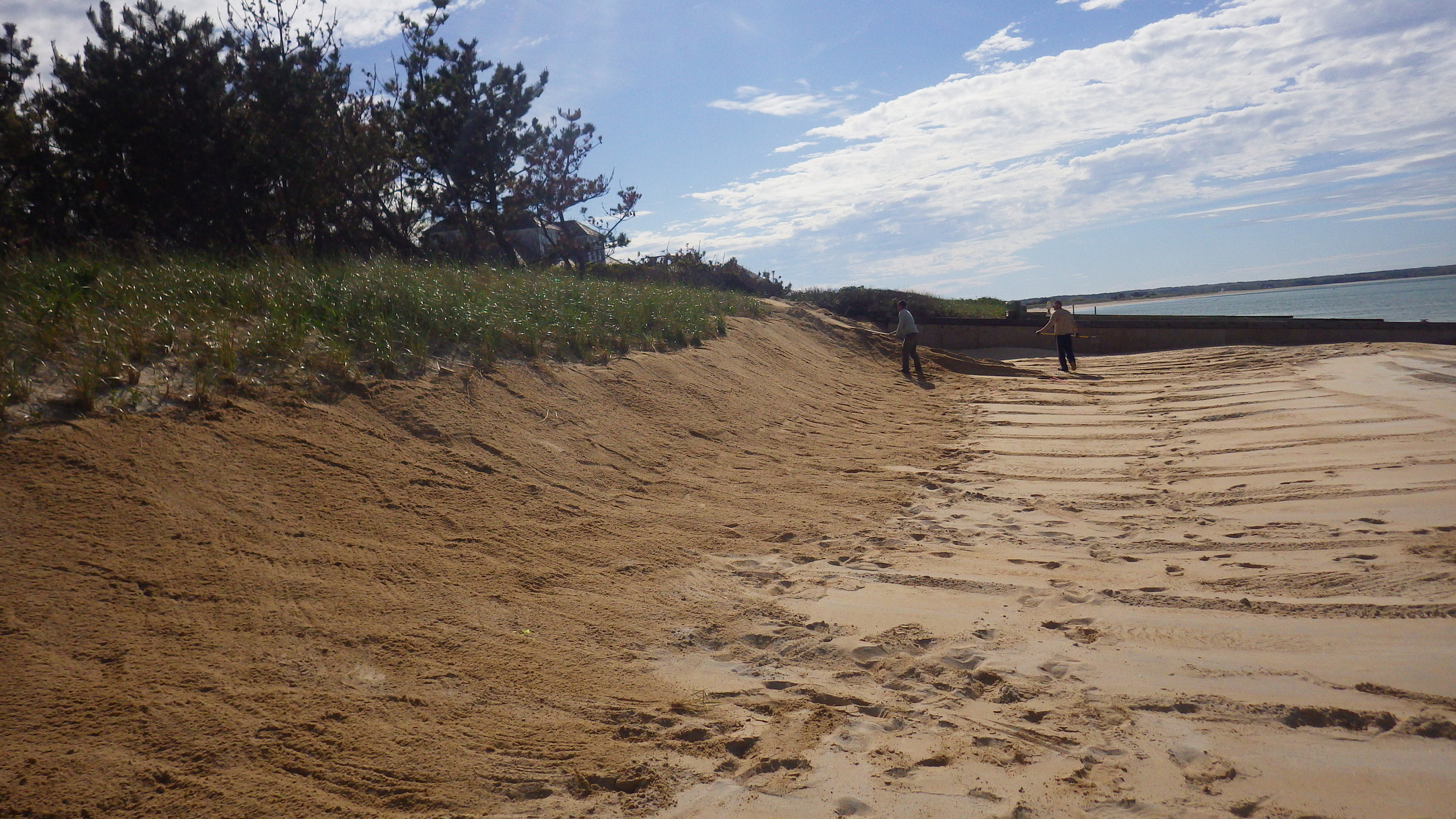Invasive Plant Management
&
View Enhancement
Unmanaged, open parcels of land often become home to invasive plant species. The soils found in areas heavily colonized by invasive species are typically devoid of herbaceous groundcover, leaving soils more vulnerable to erosion.
This project involved the construction of a private residence as well as the management of an upland stand of Japanese knotweed and a wide variety of invasive species on the coastal bank. A goal of the project included the re-establishment of a maritime shrubland, which not only provided substantially better wildlife habitat than the invasive species, but served to be significantly more compatible with preserving scenic views.
Coastal
Stabilization
This project involved the re-development of a residential property, the last unprotected parcel within a landform to endure decades of unmanaged coastal erosion.
At project commencement, the coastal bank was essentially void of vegetation due to the accelerated destabilization of this landform. The project has met and exceeded the goals of stabilizing a severely undercut coastal bank by using plant-focused bioengineering strategies. Attaining these goals prevented further bank erosion and protected both the client’s and a neighboring property.
Since 2008, the native plants thriving in this property have served to filter stormwater, protect groundwater resources, and provide exceptional wildlife habitat value, while also protecting this iconic property.
Ecological Restoration
This neighborhood-scale project involved three parcels of land with the potential to provide a critical high value wildlife corridor link between a sensitive estuary and adjacent preserved land within an otherwise highly fragmented landscape.
This project involved a severe infestation of numerous invasive species with a thick mat of porcelain berry vine, a state-listed invasive species, covered almost all the vegetation within the 2.8 acre restoration area.
The land management objectives included: intensely managing invasive plant species, encouraging and preserving existing native plants, and restoring five distinct native plant communities.
Grassland
Habitat Restoration
Wilkinson Ecological Design teamed up with the Orleans Conservation Trust, the Wellfleet Bay Audubon Sanctuary and the Massachusetts Natural Heritage and Endangered Species Program for a landscape-scale restoration effort. The collective goal to try and save the near extirpated population of the Endangered Diamondback Terrapin, while also restoring what was arguably the most severely invaded property in the Town of Orleans.
After removing nearly every upland invasive species found on Cape Cod, sowing native grassland and planting clusters of maritime shrubs, female Diamondback Terrapins were prospecting for nest sites only a few short months after the initial work was complete. By 2009, and in every subsequent year since, terrapins have successfully been hatching out baby turtles every summer.
Coastal Bioengineering
After suffering severe erosion from intense storms culminating in 2013, property owners on Martha’s Vineyard hired Wilkinson Ecological Design to design and construct a plant-focused bioengineering strategy for their property on the coast of Nantucket Sound. The site is flanked by hard, coastal engineering structures to either side, serving to direct higher levels of storm energy into the bioengineering measures.
This design has sustained numerous intense storm events since construction and continues to provide an exceptional level of coastal stabilization, while supporting a healthy diversity of coastal vegetation with the aesthetic qualities of a natural shoreline.


